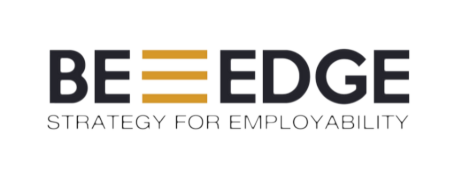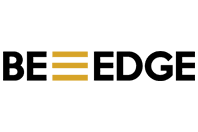
How to Pitch Your “Self-Help” Book
By Julia Ivy
January 15, 2020
Sales of self-help books reached record levels in the past year, surpassing three million. According to The Guardian, this represents a 20% increase over previous years, “propelling self-improvement or pop psychology into one of the fastest-growing genres of publishing.” According to Publishing Perspectives, self-help books are the world’s bestselling genre. Today, a broad range of authors can find an audience in this fast-growing sector. But marketing a self-help book on a topic beyond health and wellness can be tricky.
I figured out the most effective and efficient way of doing something important and came to believe other people could benefit from learning about it. Over the past several years, in my job as a professor of strategy and leadership at Northeastern University, I developed a personal strategy for employability and incorporated it into work with graduating students and career changers. From the many, many “thank you” notes I started to receive from former students, I discovered the assignment had turned out to be one of the most valuable investments students felt they’d made in advancing their boutique employability — my term for narrowly defined job searches in which individuals craft a space for themselves based on their unique life experiences, capabilities, and interests.
Inspired by such outcomes and equipped with six years of having tested and refined my method, I came up with a multi-step “how-to” instrument that graduates, and career changers can use to advance their boutique employability, and I branded it the “BE-EDGE Method.” Having used this approach repeatedly in my teaching and consulting work, I have acquired mounds of evidence showing that my instructions, templates, and examples work. I began to think more and more about how my method could make the lives of students, capstone course professors, career advisors, and recruiters a lot easier. I assembled all the guides, examples, and templates and wrote a book titled Crafting Your Edge for Today’s Job Market: Using the BE-EDGE Method in Capstone Projects and Consulting Cases.
It turns out this kind of specialty self-help manual is not so easy for book publishers and publicists to promote. Being a believer in the value of self-reflection and the power of self-help, I decided to take a step back, combine my “career strategist” expertise with my “book writer” experience, and began to think about the marketable value of my book in new ways.
I realized that when I was writing my book that all my thoughts were focused on the method and how to lay it out for the reader in a straightforward step-by-step program. This was understandable, as I had devoted so much of my life to honing my trademark “BE-EDGE” steps. But, after the book came out, I found that my preoccupation with the method was getting in the way of my ability to talk about what my book had to offer its target audience.
I decided to revise the flow of the message and start by talking about the circumstances that gave rise to my book and the philosophy behind my overarching concept of “boutique employability”, and people began to listen.
I stopped talking about the contents and started talking about the idea behind my book, the value this idea provides, and the people I created it to serve. I also began to present the book as a business product designed for a particular group of people who have a particular need. While this may seem obvious, we writers often have the opposite tendency. We become attached to the details of our invention and get ahead of ourselves by talking about specific content before introducing potential readers to the general problem we set out to solve in the first place and the usefulness of our discoveries.
Some Things I Learned From My Experience
1. Present your idea as a marketable product
 12/03/19 – BOSTON, MA. – Associate teaching professor Julia Ivy poses for a portrait on Dec. 3, 2019. Ivy wrote a book to help capstone students. Photo by Matthew Modoono/Northeastern University
12/03/19 – BOSTON, MA. – Associate teaching professor Julia Ivy poses for a portrait on Dec. 3, 2019. Ivy wrote a book to help capstone students. Photo by Matthew Modoono/Northeastern University
My core idea was that people could develop a personal strategy for enhancing their boutique employability in the same way a retail boutique develops a niche strategy. Synthesizing this idea into something that I could offer to others, I arrived at a clear definition of my product.
My marketable product was “A Personal Strategy for Boutique Employability.”
Here we come to the question, “So what?” WHO would care about this product and WHY?
2. Narrowly define and clarify whom your product will best serve
My product, “A Personal Strategy for Boutique Employability,” best serves multi-dimensional (i.e., multi-potential) job seekers who often have a hard time fitting into, or feeling fulfilled by, traditional job classifications. Most have a sense of the broad contours of a professional situation that would fit their unique set of abilities and aspirations, but few know how to craft such a space for themselves within an organization. People who fall into this category include:
- Millennials, currently in their twenties and thirties, who are naturally multidimensional and who need to find their space in the market upon graduating from college or changing careers;
- Accomplished professionals who do not want to continue what they did before and want to change careers. At the same time, they want to utilize accumulated wealth of professional expertise instead of starting over from scratch. These accomplished professionals include people like midlife career changers, recent retirees, athletes, and veterans.
Having narrowly defined the categories of people who might benefit from my product and understanding the kinds of challenges they face, WHY would they value my work?
3. Outline the benefits that your product has to offer to the people that you wrote the book for
My product, “A Personal Strategy for Boutique Employability,” enables multidimensional job seekers to shape their own space in the job market. While my potential readers, for the most part, have a general idea of the kind of work future they aspire to, they often do not know how to get from here to there. The concept of “boutique employability” provides clarity of purpose by giving a precise name to the type of employment people in this target group can only vaguely conceive. The “personal strategy” aspect of the product equips them with a means for identifying and then gaining entry into the “boutique.”
Those who invest in their boutique employability don’t need to pretend that they want to be a part of a traditional, department store-like pool of highly qualified applicants. Instead, they can determine for themselves, with precision, the organization best suited for their unique profiles.
Finally, the audience is ready to ask the question: “HOW are they going to make it happen?” Only now can we begin to talk about the content of our books.
4. Present the book as a guide or an instrument
In my case, I have come to the point where my audience is ready to hear how, using the instrument in my book, the multidimensional job seeker can develop a rapport with a key player inside a targeted entity, create an opportunity to gain that person’s trust, generate value for the organization, and, ultimately, convert their personal, social, and professional capital into the job of their dreams.
My BE-EDGE method guides them in elucidating the core of their multidimensional profile and connecting this core to a company of their choice through consultant case writing. The book makes this happen in four E-D-G-E steps that lead to BE: Boutique Employability.
You might not need it, but it’s a good idea to have it ready: proof.
There is no better way to sell your product than to provide proof of its effectiveness. I have 600+ people who have used my method over the six years I have been working with it. To date, college graduates and other professional job seekers have followed my method and developed 150+ consulting cases for real-life organizations from 22 countries, and I have testimonials stating how the personal strategies they developed helped them craft their edge and successfully manage their careers. Numbers works best, but any kind of evidence you can lay out to show the proven success of your product will convince your audience of its concrete value.
That’s it! Now, all you have to do is…
Combine these four points into a pitch.
When you bring these points together, you have the outline of a coherent marketing pitch. Be sure not to start with the material inside the book, but what the situation was that you were witnessing or experiencing when you became inspired to write it. Present your idea as a product that a particular group of people will appreciate because it provides a real-life solution for a real-life problem. In my example, the pitch sounds something like this:
- I strongly believe that my product of “A Personal Strategy for Boutique Employability” will be highly marketable and appreciated by readers (the product).
- Millennials and career-changing accomplished professionals are multidimensional in their skillsets and interests and often cannot or do not want to fit themselves into a one-dimensional job situation (the target audience).
- They need to be able to formulate a personal strategy for boutique employability and follow it to craft their edge in the market, capitalizing on their unique set of acquired skills (the benefit).
- The BE-EDGE method in my book provides a four-step guide, complete with instructions, examples, and templates, for how to get from where you are in your professional life to where you genuinely want to be (the book).
- And, by the way, 600+ of my former students and clients have already used the method and provided many testimonials and completed cases that prove how well my method works.
Your pitch template

- I believe that the _________________________ (the product or service you offer) will be highly marketable because it will lead
- _______________________ (the group of people that would buy your group), who face the challenge of __________________________ (the problem that your book addresses),
- to solve the problem by achieving ______________________________ (the solution your book offers).
- These readers stand to benefit greatly by using _____________________________ (title of your book) to guide them in finding a solution to the problem, revealing tangible outcomes at each stage of the process.
- And, by the way, I have _____________________________ (proof that your method works).
When we authors of self-help books reach the marketing stage, we must communicate as business owners who have a new product to roll out that targets a specific group of people who stand to benefit from what we have to offer. By sharing the circumstances that led us to write our books and describing the real-life situations our work is designed to improve, we will inspire more prospective readers to want to “look inside.”


